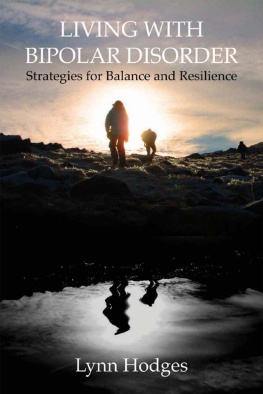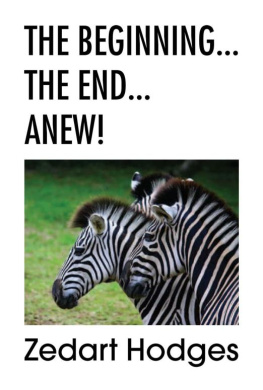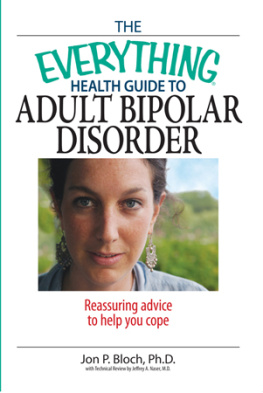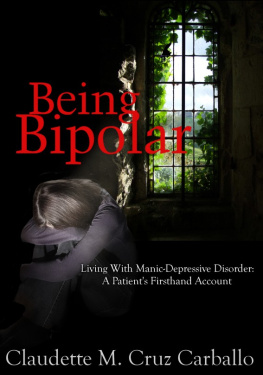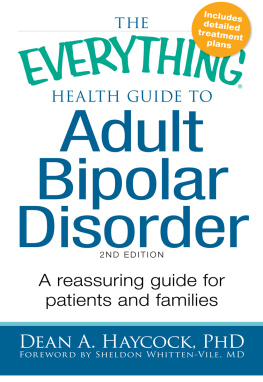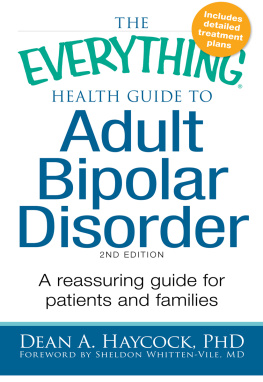

Lynn Hodges 2012
The right of Lynn Hodges to be identified as the author of this work has been asserted by her in accordance with the Copyright, Designs and Patents Act 1998.
Published in 2012 by Findhorn Press, Scotland
ISBN 978-1-84409-586-5
All rights reserved.
The contents of this book may not be reproduced in any form, except for short extracts for quotation or review, without the written permission of the publisher.
A CIP record for this title is available from the British Library.
Edited by Nicky Leach
Cover design by Richard Crookes
Illustrations by Lynn Hodges
Interior design by Damian Keenan
Printed and bound in the USA
1 2 3 4 5 6 7 8 9 17 16 15 14 13 12
Published by
Findhorn Press
117-121 High Street,
Forres IV36 1AB,
Scotland, UK
t +44 (0)1309 690582
f +44 (0)131 777 2711
e
www.findhornpress.com
Acknowledgements
I first want to say a big thank you to my three childrenMegan, Brooke, and Zacwho manage my illness brilliantly.
Thanks go to Millie Thompson, a young lady who freely gave her time to help me research information needed for this book.
My thanks also go to my sister, Kay Taylor. She has been there to offer ideas, proofread text, and generally be a sounding board.
My sister, Jill Gare, has kept me going when I have lost confidence. She has been instrumental in making sure I never gave up.
Thanks to Elaine Everest of www.thewriteplace.org.uk, for giving me the knowledge of how to find a publisher and interest them in my work.
I want to say a very big thank you to all the patients who were happy to share their stories for this book.
My care coordinator Kate Rawlings deserves my thanks for listening to me and giving me advice and knowledge on understanding things from the health professionals perspective.
I also want to say thank you to Findhorn Press for believing in me, especially to Sabine Weeke, who held my hand every step of the way.
My thanks go to Nicky Leach, my editor: without her I would not have been able to produce such a cohesive message.
Lastly, Id like to thank my friends Barbara Harrison, Sally Smith, Linda Bennett, and Karen Rayment, who are instrumental in keeping me well. Their humour and good grace have played a large part in my life. After all, where are we without good friends?
DISCLAIMER
The information in this book is given in good faith and is neither intended to diagnose any physical or mental condition nor to serve as a substitute for informed medical advice or care.
Please contact your health professional for medical advice and treatment. Neither author nor publisher can be held liable by any person for any loss or damage whatsoever which may arise from the use of this book or any of the information therein.
Contents

The Evacuee
Introduction
D id you know that one in four people in the United Kingdom will experience a mental health problem in their lifetime, and on average 1.3 percent of the population of the UK will at some point develop manic depression, now known as bipolar disorder?
Most people first become unwell with bipolar disorder when they are in their mid-teens and twenties. However, as bipolar is so difficult to diagnose, it is common for many people to go a decade or more without receiving a formal medical diagnosis. Some ten percent of all teenagers with recurring depression will go on to develop bipolar disorder during their lives.
The illness can affect anyonefrom the young to the very old, male or female. It is important to know about and understand the condition, so you feel better equipped to deal with the illness. Information is power in dealing with this disease.
This is a self-help book for people who are newly diagnosed with bipolar disorder, as well as for those individuals who have had the illness for some time. The information in the book is also designed to help the family and friends of people with bipolar gain a better understanding of the condition. I hope, too, that my personal story of dealing with bipolar will be of interest to health professionals who wish to help clients managing the disease.
The book offers stories and insights into my own journey with bipolar, as well as those of others with the disorder. Throughout you will find tips and guidance on how to live with this illness and keep in recovery as long as possible.
Living with bipolar disorder is not all bad. I have lived a very successful life in spite of having bipolar. I worked in an advertising agency during my younger years, and then ran my own successful presentation company, Up Front, for 20 years. I now run Creative Coaching Consultancy, a company specializing in working with doctors, psychiatrists, social workers, and all those involved in mental health services to help them understand what it is like to live with bipolar disorder.
Creativity is an integral part of bipolar and, during the course of the book, I explain why I would not wish to be free of this illness, even if you offered me a million pounds for it to go away.
C HA PTER O NE
What is Bipolar Disorder ?
B ipolar disorder was once known as manic depression. There are good reasons for changing the name. The word manic scared many people and labelled the mentally ill as mad.
The National Institute of Mental Health (NIMH) in the United States describes bipolar disorder as follows:
Bipolar Disorder, also known as Manic Depressive Illness, is a brain disorder that causes unusual shifts in mood, energy, activity levels, and the ability to carry out day-to-day tasks. Symptoms of Bipolar Disorder are severe. They are different from the normal ups and downs that everyone goes through from time to time. Bipolar Disorder symptoms can result in damaged relationships, poor job or school performance and even suicide. Bipolar Disorder can be treated, and people with this illness do lead full and productive lives.
The Diagnostic & Statistical Manual of Mental Disorders (DSM-IV-TR), used by psychiatrists and general practitioners (GPs) in the US and UK, offers the following description of the mania, hypomania, and depression associated with bipolar disorder:
Mania
- Extreme elevated mood or euphoria
- Grandiosity
- High energy
- Irritability
- Rapid speech
- Racing thoughts
- Decreased sleep
- Impulsiveness
- Risky sexual behaviours
- Excessive spending
Hypomania
Specifically, hypomania is distinguished from mania by the absence of psychotic symptoms and grandiosity, and by its lesser degree of impact on functioning.
Hypomania is a feature of Bipolar II Disorder and Cyclothymia, but can also occur in Schizoaffective Disorder. Hypomania is also a feature of Bipolar I Disorder as it arises in sequential procession as the mood disorder fluctuates between normal mood and mania.
Some individuals with Bipolar I Disorder have hypomanic as well as manic episodes. Hypomania can also occur when moods progress downwards from a manic mood state to a normal mood.
Next page
